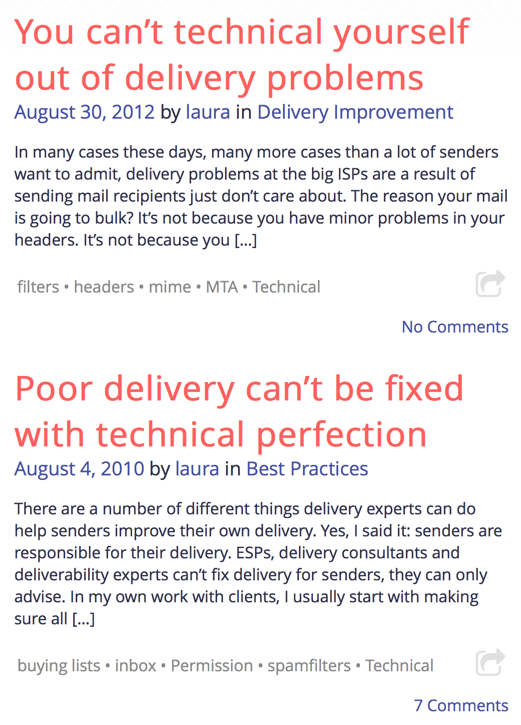The perfect email
- laura
- September 12, 2016
- Delivery improvement
More and more I’m moving away from consulting on technical setup issues as the solution to delivery problems. Delivery is not about the technical perfection of a message. Spammers get the technical right all the time. No, instead, delivery is about sending messages the user wants. While looking for something on the blog I found an old post from 2011 that’s still relevant today. In fact, I’d say it’s even more relevant today than it was when I wrote it 5 years ago.
Email is a fluid and ever changing landscape of things to do and not do.
Over the years my clients have frequently asked me to look at their technical setup and make sure that how they send mail complies with best practices. Previously, this was a good way to improve delivery. Spamware was pretty sloppy and blocking for somewhat minor technical problems was a great way to block a lot of spam.
More recently filter maintainers have been able to look at more than simple technical issues. They can identify how a recipient interacts with the mail. They can look at broad patterns, including scanning the webpages an email links to.
In short, email filters are very sophisticated and really do measure “wanted” versus “unwanted” down to the individual subscriber levels.
I will happily do technology audits for clients. But getting the technology right isn’t sufficient to get good delivery. What you really need to consider is: am I sending email that the recipient wants? You can absolutely get away with sloppy technology and have great inbox delivery as long as you are actually sending mail your recipients want to receive.
The perfect email is no longer measured in how perfectly correct the technology is. The perfect email is now measured by how perfect it is for the recipient.
